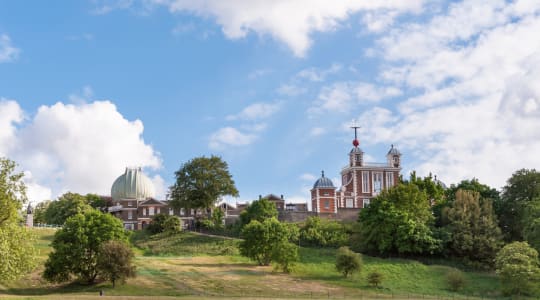
The Royal Observatory Greenwich is an astronomical observatory located in Greenwich, London, UK. It was founded in 1675 by King Charles II and is part of the National Maritime Museum.
The observatory is best known for its role in the development of the longitude system, which allowed sailors to navigate more accurately at sea. In the 18th century, the astronomer royal at the observatory, Nevil Maskelyne, devised a method to determine longitude using the positions of the moon and stars. This method, known as the lunar distance method, was later adopted by the British government as the standard method for determining longitude at sea.
The observatory is also famous for its historic telescopes, including the 28-inch Great Equatorial Telescope and the Shepherd Clock, which was used to transmit time signals to ships on the River Thames. The observatory also houses the UK's largest refracting telescope, the 28-inch Thompson Refractor, which was built in 1893.
Today, the observatory is open to the public and visitors can explore its historic buildings, including the Flamsteed House, the Octagon Room, and the Meridian Courtyard. The observatory also has interactive exhibits on astronomy, timekeeping, and navigation, and offers guided tours and stargazing events. The observatory's prime meridian, which marks the line of 0° longitude, is also a popular tourist attraction and can be visited for free.
Explore Near Royal Observatory Greenwich
Discover 5 attractions, 5 cities, and 3 airports within 75km. Perfect for planning day trips, finding connecting flights, or discovering new destinations to explore during your visit.
Nearby Attractions & Places to Visit
5 destinations within 715m - 6.9km from your location





Nearby Cities Worth Exploring
5 destinations within 3.3km - 8.5km from your location
Airports Near Royal Observatory Greenwich
3 destinations within 5.0km - 38.9km from your location
Cross-Border Adventures Near Royal Observatory Greenwich
Discover cross-border adventures near Royal Observatory Greenwich. Explore neighboring countries with similar attractions and extend your travel experience across borders.

